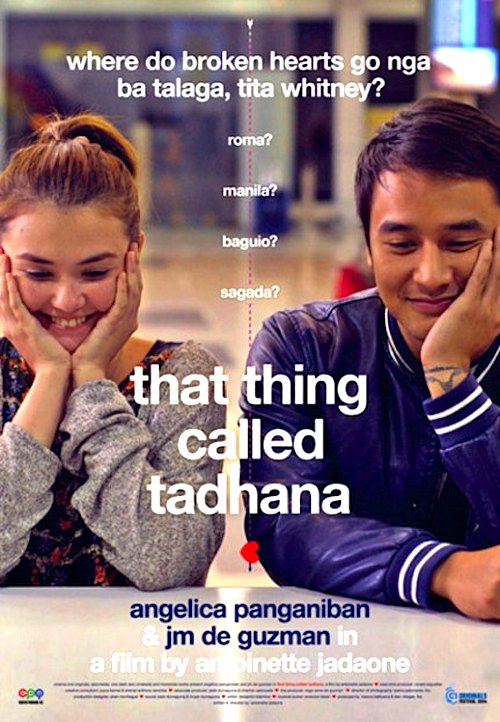By Joe Bendel. It is a film that inspired a children’s book for adults in the Philippines. Mace has an old romantic story about a heart and an arrow, while Anthony is a talented illustrator. These kids are probably perfect for each other, but fate or karma is not necessarily so accommodating in Antoinette Jadaone’s box office hit That Thing Called Tadhana, which screens during the 2015 edition of New Filipino Cinema at the Yerba Buena Center for the Arts.
They do not exactly meet cute, but Mace and Anthony first encounter each other on the flight back from Rome. Mace had scrimped and saved to surprise her guest-worker boyfriend Marco—and did she ever. The trip also had emotional significance for Anthony, who made a point of seeing all the sights his beloved late mother dreamed of seeing for herself.
 At first, Anthony gives the distraught Mace a bit of help, countryman to countryman. However, when they start to talk, they really begin to listen to each other. Instead of plunging back into their lives, they take a Linklater-style daytrip to Bagiuo that turns into a day-and-night-into-the-next-morning trip. As you might expect, Mace is still hung-up on her ex, whereas Anthony is hung up on being hung-up. Obviously, they are meant to be with each other, but Jadaone is not exactly setting us up to expect a tidy rom-com ending.
At first, Anthony gives the distraught Mace a bit of help, countryman to countryman. However, when they start to talk, they really begin to listen to each other. Instead of plunging back into their lives, they take a Linklater-style daytrip to Bagiuo that turns into a day-and-night-into-the-next-morning trip. As you might expect, Mace is still hung-up on her ex, whereas Anthony is hung up on being hung-up. Obviously, they are meant to be with each other, but Jadaone is not exactly setting us up to expect a tidy rom-com ending.
Tadhana roughly translates from Tagalog as destiny or fate. It is often sealed pretty early and sometimes even worse than death, but it always has a fickle finger. Frankly, it is a little surprising how bittersweet and reserved Tadhana actually is, considering what a monster hit it was domestically. There are no fireworks scenes, but since it is in the Philippines, there is a good deal of rain, but it is not cheesy rom-com rain.
It should also be noted the co-leads are enormously winning. As Mace and Anthony, Angelica Panganiban and JM de Guzman are cute, but hardly inapproachable super-model waif-types. They really look like they fit together. They also have a good handle on the dialogue (some of it reportedly improvised) that often sounds deceptively casual but deep down is really kind of heavy. When that sort of discourse doesn’t connect, it can be painful, but they mostly pull it off.
Granted, we have seen these sorts of film before, besides the Before trilogy. Recent Korean films like A Midsummer’s Fantasia and Gyeongju evoke a similar vibe, but are far deeper and richer. Nevertheless, the charm of Panganiban and Guzman is undeniable. Jadaone also deserves credit for avoiding cheap sentiment and manipulation. It is a pleasant, nicely turned little film that should be a crowd-pleaser when it screens this Saturday (6/20) as part of New Filipino Cinema 2015 at the Yerba Buena Center for the Arts in San Francisco.
LFM GRADE: B-
Posted on June 15th, 2015 at 10:10pm.